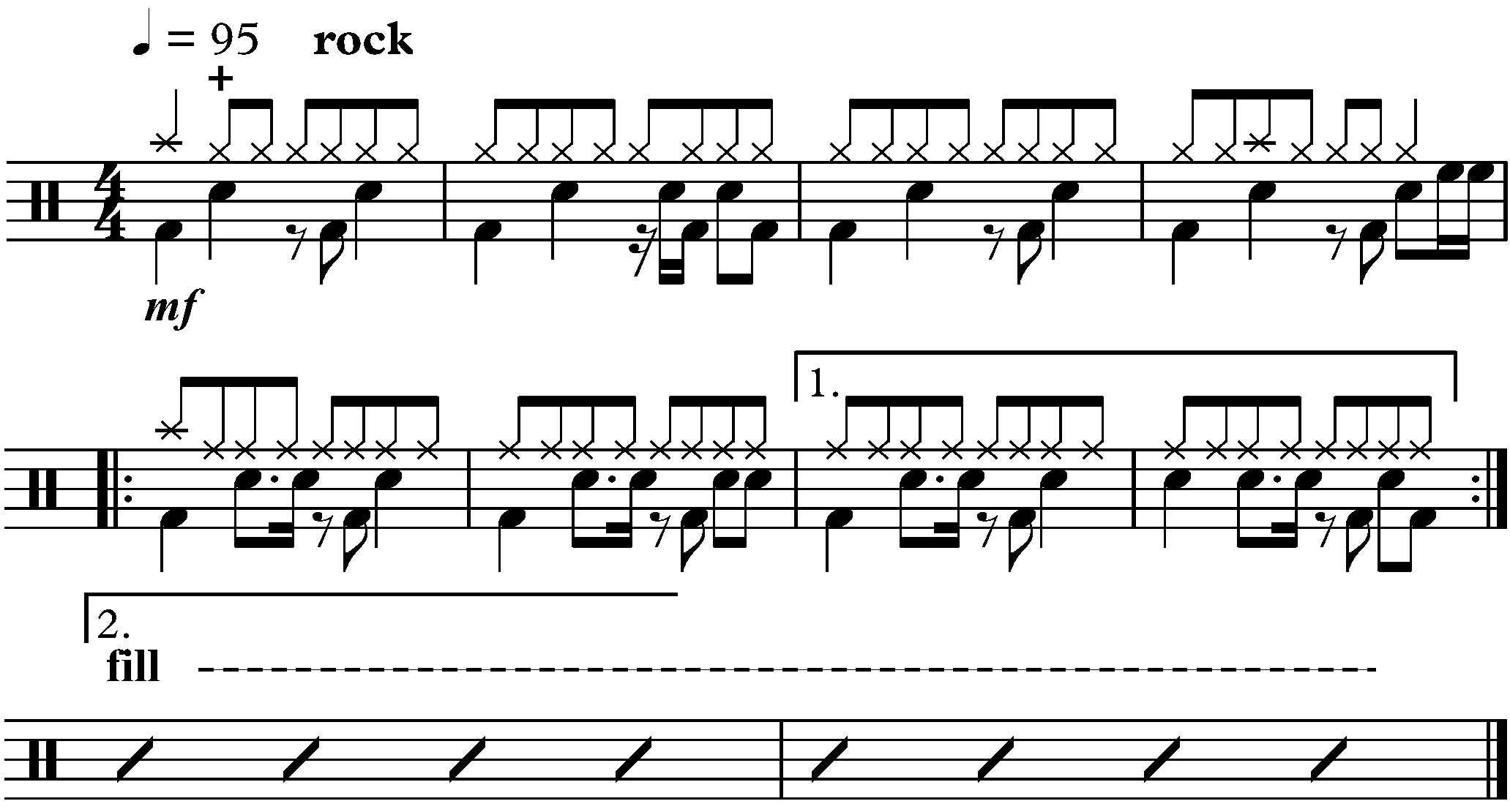Sight reading is another common exam topic that involves being given a piece of sheet music and playing it with very little preparation. In the 'real world' it is very useful to get good at if you plan to get into session work as for these sort of jobs you will generally be called in at short notice and there will be strict time limits in place. In the lower grades, sight reading tests will be made up of rhythms played on the snare drum. In higher grades the tests are short pieces built up of grooves, fills and sometimes improvised sections.
In each level of drumscore lessons you will be given several sight reading exercises based on what you may see in an exam a long with tips on how to prepare for sight reading situations.
Let's take a look at a simple sight reading test that you might find in a grade 1 or 2 exam. What you will usually be presented with is a four bar rhythm built of any combination of Note Values and Rests. Here's an example:

In an exam you would be presented with the piece above and left for around a minute to prepare it. The first thing I would do in this situation is have a quick scan over the piece and see if there are any areas that may throw me off. If there is a section like that I will get the counting for it straight in my head. I would then play through the full piece a few times, again looking for problem areas. My main focus then would be to fix sections of the piece that I am getting wrong. Once it comes to playing to the examiner, you will usually be given the option of playing with or without a metronome, my preference is always with a metronome but that is down to you.
Fortunately we already have a lot of lessons up that will really help with preparing you for sight reading. By far the most useful are our Introduction To Counting and Counting Building Blocks lessons. In these lessons you will learn how to recognize different rhythms and the counting associated with them. If you memorize these shapes and patterns there will be very little that will throw you in a sight reading test.
As the grade gets higher more notation will be added to the pieces to try and confuse you. Some examples of this is the use of dotted notes, different groups of rhythms, different time signatures, higher tempos, addition of dynamics and use of repeat marks. Lists of things you should know for each level of sight reading will be given throughout our sight reading lessons but the most common are:
- Knowledge of basic note values, notation and rests.
- Understanding grouping of notes in various time signatures.
- How to work out counting.
- Understanding of repeat mark notation.
- Understanding of dynamic markings.
- The ability to play to a metronome.
The intention of this introductory lesson is to just give you a basic understanding of what sight reading is and what you will be covering in later lessons on the subject. In our level 1 sight reading lessons you will learn how to quickly work out a four bar snare rhythm. For now I will leave you with a slightly more complicated sight reading test that you might see at around grade 4. If you can't play the parts at least have a think about what you might do to prepare a piece such as this:


